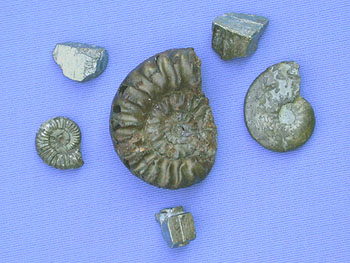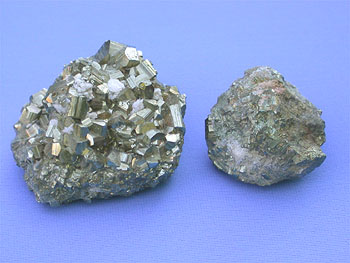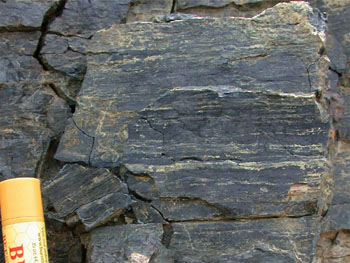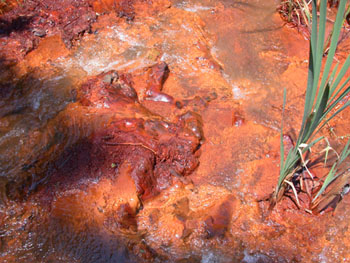Pyrite
Pyrite is a cool mineral that forms a range of beautiful and interesting crystal shapes, all with pyrite's distinctive brassy yellow color (Amethyst Galleries shows examples). It is associated with a range of economically important ore minerals, and it often takes interesting forms in marine sediments. For example, pyrite often replaces fossils, traces out animal burrows, and forms balls and irregular raspberry-textured blobs. Weathered pyrite acquires a tarnished dull brassy color
|
|
Here are three ammonite fossils made of pyrite and three pyrite-cube fragments. You can see the tarnished brassy color of weathered pyrite.
|

|
|
On the left is a mass of nicely formed, fresh brassy yellow pyrite crystals, each a couple of mm across.
On the right is a weathered mass of pyrite crystals.
|

|
|
Coal and many shales contain microscopic pyrite crystals throughout.
Once near the surface, oxygenated water attacks pyrite, causing this iron sulfide mineral to break down into various sulfur and iron compounds. The pale yellowish bands on the coal at right are elemental sulfur, the rusty coatings are iron oxides.
|

|
|
Pyrite weathering also makes sulfuric acid and relases a great deal of iron. Natural exposures weather slowly and do not create problems. Piles of mine debris and underground mine workings expose a lot of fresh pyrite to a great deal of water. Thus, mine workings can produce a lot of iron-rich, acidic mine drainage.
The orange gunk is iron oxide forming on a streambed in the drainage from an old coal mine. Yum!
|

|
|




